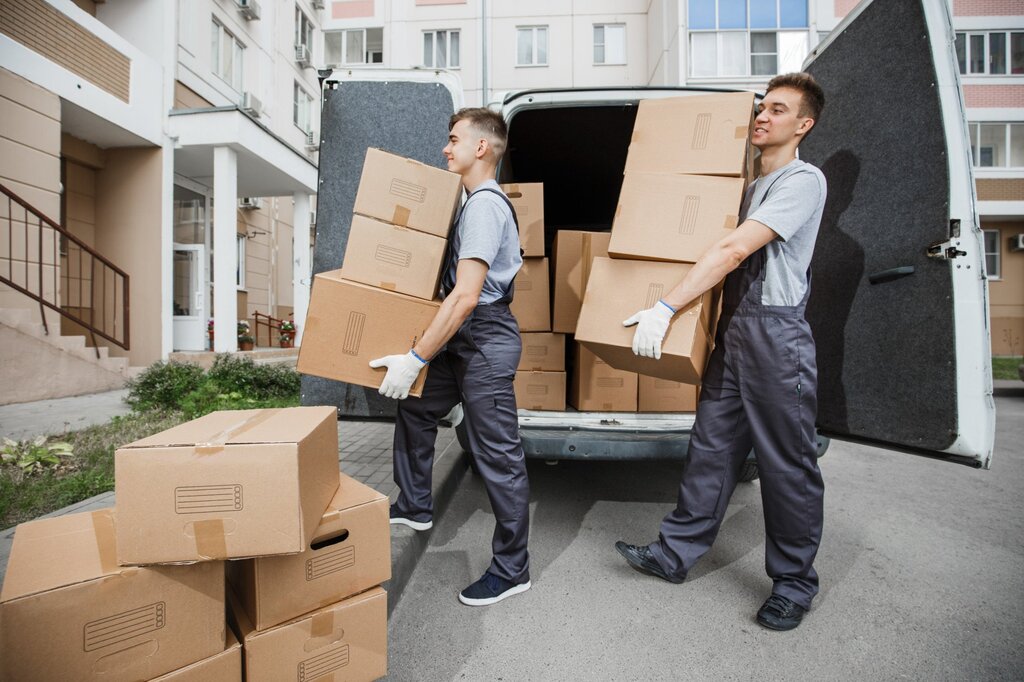Explore this post with:
In the bustling city of New York, commercial moves are a frequent occurrence, yet they often come with a substantial environmental cost. With the rising global concern for our planet’s well-being, the concept of eco-friendly moving has gained traction, prompting a more conscious approach to the process. This involves employing sustainable practices such as using green packing materials, implementing efficient transportation routes, and minimizing waste. The implications of these practices not only affect the environment but also the economy and corporate social responsibility. Perhaps it’s time we take a closer look at how businesses can make their moves in NYC more sustainable.
Understanding Eco-Friendly Moving
In the domain of commercial relocations, understanding eco-friendly moving entails recognizing the significant role of sustainable practices in reducing environmental impact while ensuring a seamless shift. This concept is much more than the mere use of recycled boxes or biodegradable packing peanuts; it encompasses a wider vision that includes green renovations and ecological architecture.
Eco-friendly moving begins with sustainable planning. This often involves making green renovations to the new office space, ensuring that it is as energy-efficient and environmentally friendly as possible. These renovations could include installing solar panels, using energy-efficient appliances, and incorporating sustainable materials in the construction process.
Furthermore, the principles of ecological architecture play an integral role in the new commercial space design, with a keen focus on natural lighting, efficient ventilation, and the use of reclaimed or recycled materials. The aim is to create spaces that not only minimize harm to the environment but also contribute positively to the well-being of the employees.
Benefits of Sustainable Moving

Embracing sustainable moving practices offers a plethora of benefits, ranging from substantial cost savings to markedly reducing a company’s carbon footprint. The primary advantage of these practices lies in the utilization of sustainable logistics. This involves planning, implementing, and controlling the efficient, cost-effective flow and storage of goods, using methods that respect the environment. By partnering with trusted movers for businesses companies can ensure that their move is not only efficient but also environmentally responsible.
A key benefit of sustainable logistics is the minimization of waste, leading to significant cost savings. By optimizing transportation routes and shipping loads, companies can reduce fuel consumption and lower their operational costs while also lessening their environmental impact.
Another critical aspect of sustainable moving is carbon offsetting, a practice that allows companies to offset their carbon emissions by investing in projects that reduce or remove greenhouse gas emissions. This not only aids in meeting environmental regulations but also enhances a company’s green credentials, potentially attracting environmentally-conscious clients and investors.
Green Packing Materials
Moving beyond the domain of logistics, the adoption of green packing materials emerges as another important factor in eco-friendly commercial moves. Shifting to sustainable materials not only reduces waste but also contributes to a more circular economy, thereby lessening the negative impacts on our environment.
Biodegradable peanuts are one such green packing material. Made from organic, renewable resources, these peanuts dissolve in water, leaving no harmful residues. They are light, cost-effective, and provide excellent cushioning for fragile items, making them an ideal choice for eco-conscious businesses.
Meanwhile, plant-based bubble wrap is another sustainable alternative increasingly being embraced. Derived from plant-based polymers, these bubble wraps are not only fully biodegradable but also provide robust protection for delicate items during transit. Unlike their traditional counterparts, these green materials decompose naturally without releasing any damaging toxins into the environment.
In a city as bustling and dynamic as New York, where commercial moves are frequent, the use of green packing materials can make a significant contribution to environmental sustainability. As a result, businesses should consider these eco-friendly options, which offer a practical and responsible approach to commercial moving.
Efficient Space Utilization
Efficient space utilization stands as the next crucial aspect of eco-friendly commercial moving, particularly in the context of a densely populated city like New York. In a city where every square foot counts, both from a cost and environmental perspective, it is essential for businesses to optimize their space.
One effective way to achieve this is through innovative space saving designs. These designs consider the workflow and spatial needs of a business, allowing for maximum efficiency in the use of available floor space. By reducing the amount of space needed, companies can minimize their environmental footprint, decrease energy consumption, and also lower their rental costs.
Compact furniture options are another essential component of efficient space utilization. Modern furniture manufacturers are increasingly incorporating sustainability principles into their design processes, producing pieces that are not only smaller, but also made using environmentally friendly materials and manufacturing procedures. These furniture options not only save space, but also contribute to the overall eco-friendly ethos of a business.
Optimizing Transportation Routes
Beyond the confines of the office, eco-friendly commercial moving also entails careful planning and optimization of transportation routes. The goal is to reduce greenhouse gas emissions, mainly carbon dioxide, linked to climate change. To achieve this, fuel efficient scheduling and carbon offset programs are key considerations.
Fuel efficient scheduling involves planning the most direct routes and coordinating moves to avoid excessive idling, thereby minimizing fuel consumption. Working with the best Texas car shipping services is most suitable for businesses relocating vehicles or equipment across state lines. They ensure on-time delivery and maintain sustainability standards. GPS tracking and advanced logistics software can help map out the most efficient routes, taking into account traffic patterns and road conditions. Additionally, consolidating multiple smaller loads into one large shipment can further reduce the number of trips, leading to significant fuel savings.
Carbon offset programs are another effective tool in green moving practices. These initiatives allow companies to invest in environmental projects that counterbalance the carbon emissions produced during the move. This could include projects such as tree planting or renewable energy installations.
Energy-Efficient Moving Equipment

Employing energy-efficient moving equipment in commercial relocations is a pivotal step towards achieving eco-friendly shifts in NYC. This encompasses the use of green moving vehicles, which substantially reduce carbon emissions compared to traditional models. Moreover, the utilisation of sustainable packing materials not only minimises waste but also contributes to the conservation of natural resources.
1. Green Moving Vehicles
A substantial number of commercial moving companies in New York City are now harnessing the power of green moving vehicles as part of their commitment to eco-friendly practices. Through electric vehicle adoption, these forward-thinking businesses are drastically reducing their carbon footprints, thereby contributing to a healthier urban environment.
To quantify their environmental impact, many companies utilize carbon footprint calculations. This process involves measuring the total greenhouse gas emissions caused directly and indirectly by their operations, primarily focusing on CO2 emissions. By switching to electric or hybrid moving vehicles, these companies can greatly decrease this footprint. While traditional moving trucks emit substantial amounts of CO2, electric vehicles produce none during operation.
Furthermore, the use of green moving vehicles aligns with NYC’s Clean Fleet Initiative, which aims to create the largest electric municipal fleet in the country. This policy push encourages commercial movers to modernize their fleets with electric or hybrid vehicles, contributing to New York’s broader sustainability goals.
2. Sustainable Packing Materials
While adopting green vehicles is an important step in eco-friendly commercial moving, another significant aspect is the use of sustainable packing materials and energy-efficient moving equipment. The industry is witnessing a shift towards eco-conscious packing options that greatly reduce the environmental impact of moving.
One such innovative solution is biodegradable peanuts, a green alternative to traditional styrofoam peanuts. These packing peanuts are made from natural, non-toxic sources like corn starch, which decompose in water leaving no toxic waste. They provide excellent cushioning for fragile items, while ensuring a minimal carbon footprint.
Similarly, plant-based bubble wrap is another sustainable packing material gaining popularity. Unlike conventional plastic bubble wrap, this eco-friendly variant is derived from plant sources, making it biodegradable and compostable. It offers the same level of protection as its plastic counterpart without the detrimental environmental effects.
Moreover, energy-efficient moving equipment like hand trucks or dollies made from recycled materials also contribute to a greener move. These equipment are not only sturdy and reliable but also exhibit a lower environmental impact during production.
Embracing these sustainable packing materials and energy-efficient moving equipment can dramatically reduce the ecological impact of commercial moves, making them a smart choice for businesses in NYC aiming to go green.
Reusing and Recycling Strategies
Implementing robust reusing and recycling strategies can greatly reduce the environmental impact of commercial moves in New York City. These strategies not only minimize waste but also contribute to carbon offsetting, an essential aspect of sustainable practices.
Firstly, sustainable decluttering involves sorting out unnecessary items before the move, reducing the volume of waste generated. Rather than discarding these items, businesses can opt to donate, sell, or recycle them. This process, in turn, lessens the demand for new products, contributing to carbon offsetting by reducing the emissions associated with manufacturing.
Secondly, using recyclable materials for packing is another effective strategy. After the move, these materials can be recycled, further reducing waste. Also, businesses can consider reusing moving boxes, packing peanuts, bubble wrap, and other materials for future relocations or other purposes. This not only reduces waste but also cuts down on the resources required to produce new packing materials.
Minimizing Waste Production
Shifting to the core aspect of eco-friendly commercial moves, it is imperative to focus on minimizing waste production. This can be accomplished through strategies such as reusing packing materials, donating unused items, and properly recycling electronics. Each of these measures not only reduces the environmental impact of the move but also promotes a more sustainable approach to corporate relocations.
1. Reuse Packing Materials
In the domain of eco-friendly commercial moving, reusing packing materials emerges as a significant strategy to minimize waste production. This approach not only conserves resources but also reduces the environmental impact of the moving process by decreasing the amount of waste sent to landfills.
Sustainable storage solutions play a key role in facilitating the reuse of packing materials. Companies can invest in durable, reusable moving crates made from recycled plastic, which can be used multiple times. These are an environmentally friendly alternative to single-use cardboard boxes, offering both sustainability and efficiency. Additionally, materials such as packing paper and bubble wrap can also be stored and reused for future moves.
Zero waste unpacking is another important aspect of this approach. After moving, instead of discarding packing materials, they can be carefully unpacked and stored for reuse. This practice not only promotes sustainability but also contributes to cost savings in the long run.
Reuse of packing materials, sustainable storage, and zero waste unpacking are integral practices in achieving an eco-friendly commercial move. They not only reflect a commitment to environmental responsibility but also enhance the sustainability and efficiency of the business operations.
2. Donating Unused Items
Minimizing waste production during commercial moves can greatly be achieved through the act of donating unused items. Often, companies find they have surplus furniture, equipment, and supplies that are no longer needed in their new space. Instead of contributing to landfill waste, these items can be given a new life through donation.
Creating charitable partnerships is a practical and responsible way to handle such items. There are numerous non-profit organizations in NYC that would greatly benefit from these contributions. Donating to these organizations not only assists in their mission but also helps in promoting a circular economy, reducing waste, and conserving resources.
From an economic perspective, donating unused items also offers financial benefits. Under the Internal Revenue Code, businesses can claim tax deductions for charitable donations, which can offset some of the costs associated with moving. However, it’s important to consult with a tax professional to understand the specific requirements and potential benefits.
3. Recycling Electronics Properly
A significant aspect of eco-friendly commercial moves involves the proper recycling of electronic waste, a category that often includes computers, printers, servers, and other office equipment. As businesses relocate, it’s important to take into account the environmental impact of discarding these items. They contain hazardous materials that, if not handled properly, can contaminate soil and groundwater, posing serious health risks.
To mitigate these effects, companies should adhere to E waste legislation, guaranteeing electronics are recycled in an environmentally responsible manner. This involves sorting, dismantling, and extracting valuable components while safely handling toxic materials like lead, mercury, and cadmium.
In New York City, businesses can utilize certified e-waste recycling facilities to make sure compliance with these regulations. These facilities are equipped to handle electronic waste properly, minimizing the release of harmful substances into the environment.
Moreover, many electronic manufacturers offer take-back programs as part of their commitment to sustainability. These programs allow businesses to return used electronics for proper recycling, reducing the amount of waste sent to landfills.
Partnering With Green Vendors
Selecting eco-friendly vendors is an integral part of an environmentally conscious commercial move in NYC. The decision to work with green suppliers is a vital step in reducing the environmental impact of your relocation. These vendors go the extra mile, guaranteeing that their products, services, and operations are sustainable and cause minimal harm to the environment.
Vendors with eco certifications should be your preferred choice. These certifications signify compliance with stringent standards of environmental responsibility. Vendors who have earned such certifications have demonstrated their dedication to reducing their carbon footprint and integrating sustainable practices in their operations.
However, certifications alone cannot provide complete assurance of a vendor’s eco-friendliness. Therefore, conducting vendor audits is essential. Audits allow you to evaluate the vendor’s environmental policy, energy use, waste management, and other related areas. This process helps make sure that your move is supported by truly eco-friendly partners, aligning your corporate relocation with the broader goal of environmental sustainability.
To conclude, partnering with green vendors is not just about making an eco-friendly move. It’s about taking conscious steps towards a sustainable future, one commercial move at a time.
Post-Move Eco-Friendly Practices

Once the commercial move is complete, the focus shifts towards implementing eco-friendly practices in the post-move phase. Emphasis will be placed on green disposal methods, specifically those that promote recycling and diminish waste. Additionally, ways to repurpose and reuse moving supplies to further reduce environmental impact will be explored.
1. Green Disposal Methods
Moving to new premises often leaves businesses with a significant amount of waste material, making the implementation of sustainable disposal practices an environmental imperative. One such practice is composting organic waste. This encompasses any biodegradable materials, such as food scraps or paper, which can be broken down and used as a nutrient-rich soil amendment. This not only reduces the amount of waste going to landfills but also helps in maintaining the health of urban green spaces.
In addition to composting, businesses can also consider green alternatives to traditional packing materials like bubble wrap. Biodegradable packing peanuts, for instance, offer the same level of protection but decompose naturally over time, eliminating the environmental toll of plastic waste. Additionally, recyclable packing paper is another feasible alternative that reduces the reliance on non-renewable resources.
2. Reusing Moving Supplies
In an effort to further reduce environmental impact post-move, it is highly advisable for businesses to contemplate reusing moving supplies whenever possible. Understanding the supply lifecycle can greatly contribute to achieving this goal. Once unpacking is complete, moving supplies such as boxes, bubble wraps, and packing peanuts do not have to be immediately discarded. Instead, these materials can be stored for future use, thereby extending their lifecycle and reducing waste.
Sustainable storage becomes important in this scenario. Find a dry, clean place where you can neatly stack and store these supplies. Boxes can be flattened and bubble wrap rolled up to minimize space usage. For businesses with limited storage space, consider sharing these materials with other companies or donating them to local schools, craft groups, or charities that can make effective use of them.
Reusing moving supplies not only reduces the amount of waste heading to landfills but also cuts down on the demand for new production, which is often resource-intensive. By incorporating this practice, businesses can make their commercial moves in NYC more eco-friendly, demonstrating a commitment to sustainability and environmental responsibility.
Frequently Asked Questions
The costs of an eco-friendly commercial move in NYC can vary, largely influenced by green packaging expenses and energy efficiency measures. Costs might increase due to biodegradable packaging and energy-efficient transport, but they are worthwhile investments.
Employees can contribute to a sustainable moving process through green packing methods like using recycled materials, and receiving training on minimizing waste and maximising efficiency during the relocation process.
Yes, businesses may be eligible for grants or incentives for implementing sustainable practices like using eco-friendly packaging and green transportation during relocation. These often come from governmental or environmental bodies promoting sustainable business operations.
Challenges during an eco-friendly commercial move may include sourcing green packing solutions, securing eco-friendly transportation, and ensuring minimal environmental impact. Additional issues could arise from staff training and potential higher costs associated with sustainable practices.
Eco-friendly moving enhances corporate social responsibility by minimizing environmental impact through green packaging and effective waste management, demonstrating a commitment to sustainability and setting an example for responsible business practices.
In Case You Missed It!
About the Author: archistyladmin
At Architecturesstyle, we’re passionate about smart design, beautiful spaces, and practical tips that help you bring great architecture into everyday life. Whether it's modern home ideas, iconic buildings, or expert advice, our team brings fresh and useful content to readers who love architecture as much as we do.




